Village Seonbichon (선비촌)
8.6 Km 4247 2020-06-16
2796, Sobaek-ro, Sunheung-myeon, Yeongju-si, Gyeongsangbuk-do
+82-54-638-6444
Le village Seonbichon à Yeongju, province du Gyeongsangbuk-do, le berceau du confucianisme coréen, est là où est préservé l'esprit et l'héritage des anciens érudits coréens. Le village est l'endroit idéal pour en apprendre plus sur la Corée traditionnelle.
Le village Seonbichon propose plusieurs expositions, manifestations et ateliers excitants.
* Surface - 57,717㎡
* Surface habitable - 2,651㎡
* Installations –
7 maisons aux toits en tuiles, 5 maisons aux toits de chaume, 1 tour, 2 pavillons, 2 pavillons Jeongryeogak,
1 autel Seonghwangdang 1 entrepôt, marché Jeojageori
* Susinjega (formation morale et gestion des affaires domestiques) –
Maison de Kim Sang-jin, Ancienne demeure Haeudang, Village Ganghakdang
‘Sujinjega’ désigne l'éducation morale et la gestion des affaires domestiques. Vous en apprendrez plus sur le système éducatif traditionnel coréen et sur le mode de vie des érudits de l'époque.
* Ipsinyangmyeong (grimper les échelons de la société) –
Ancienne demeure de Duam, demeure principale du clan Jang de Indong. Ces deux maisons vous donneront un bon aperçu de la vie des anciens érudits à Yeongju.
* Geomuguan – Maison de Kim Mun-gi, Maison Manjukjae, Pavillon
‘Geomuguan’ signifie se passer du confort et du bien être matériel. Ces vieux bâtiments témoignent du mode de vie austère des anciens intellectuels qui cherchaient à vivre une vie simple loin du bruit généré par la société.
* Udobulubin – Maison de Kim Se-gi, maison de Kim Roe-jin, maison de Jang Hwi-deok, maison de Lee Hu-nam, maison de Kim Gyu-jin, Quartier des domestiques de la maison de Duam
‘Udobulubin’ se réfère au fait de chercher à vivre une vie droite même dans la pauvreté. Là encore les maisons vous donneront un bon aperçu de la vie austère que menaient ces érudits, qui n'avaient pas honte d'être pauvre.
Hamheung Myeonok (함흥면옥)
11.0 Km 146 2016-09-05
109-10, Jungang-ro, Yeongju-si, Gyeongsangbuk-do
Hamheung Myeonok is a family operated business for three generations mainly serving ‘naengmyeon’ (cold noodles) and ‘galbi’ (grilled ribs).
A well-known place in Yeongju, Hamheung Myeonok offers the second floor especially for groups.
Cleanliness and hygiene are most emphasized by the owner.
Hand kneaded cold noodles are extra chewy and their North Korean style ‘bulgogi’ (marinated barbeque beef) are quite famous.
Also, try their ‘galbi Jjim’ (marinated and simmered ribs) which is combined with Korean herbal medicine providing a healthy dining choice for visitors.
Excellent service, atmosphere and food.
Overall a superb restaurant.
Gare de Yeongju (영주역)
11.8 Km 467 2015-12-02
경상북도 영주시 선비로 64
영주역은 1941년 7월 1일 보통역으로 영업을 개시하여 1973년 12월 23일 현역사로 이전하였다.
청량리 기점 213.2 km지점에 위치하며 중앙선에서 영동선과 경북선이 분기하는 시종착역이고, 경북본부의 영주관리역(영주역,희방사역, 풍기역, 문수역, 평은역)으로 모든 열차가 정차하고 있다.
경북 북부지역의 교통의 요충지로 십여년전까지도 이용객이 가장 많은 전성기를 누렸으나, 도로교통의 발달로 이용고객이 현저히 줄어왔다.
앞으로 2018년까지 중앙선복선화가 완전히 이루어질 것으로 예상되며 영주-청량리간 소요시간이 1시간 10분까지 단축될 것으로 전망되어 직원들의 기대가 상당히 높다.
Grotte Cheondong (천동동굴)
14.2 Km 12436 2020-01-02
17-1, Cheondong-ri, Danyang-eup, Danyang-gun, Chungcheongbuk-do
+82-43-422-2972
Située à la lisière de la montagne derrière Cheondong-ri (Danyang), la Mine de Cheondong est une mine de calcaire de 470m de long. Formée il y a 450 millions d’années, elle est connue pour avoir de splendides roches de calcaire appelées « plateaux de fleurs ». Elle est décorée de nombreux stalagtites et stalagmites, de colonnes et d’autres, comme s’ils faisaient partie d’une forêt luxuriante. D’abondants dépôts d’origine animale font de la mine une énorme galerie de spécimens.
Bien qu’il s’agisse d’une mine petite et à part, Cheondong peut se vanter d’avoir un grand nombre d’atouts naturels splendides. Avec la Mine de Gosu (Monument naturel numéro 256) située à Gosu-ri (Danyang), celle de Cheondong est considérée comme l’une des plus belles mines de calcaire de Corée.
Vallée de Darian (다리안계곡)
14.3 Km 31159 2021-05-17
528-10, Darian-ro, Danyang-gun, Chungcheongbuk-do
+82-43-423-1146
La légende raconte qu’un dragon a pris son envol vers le ciel depuis la vallée de Darian. La vallée de Darian tient son nom de la vue théâtrale des chutes d’eau passant sous un pont. Prenant sa source au pic de Biro dans la montagne Sobaeksan, l’eau s’écoule à travers la vallée de Darian, Cheongdong, Geumgok, et la cave de Gosu Donggul.
L’eau pure et glacée tourbillonne à travers les rochers aux formes curieuses de la vallée, entourée par une profusion d’arbres. C’est pour cette raison que la vallée est très populaire en été. La zone touristique de Darian, au centre de la vallée, attire des centaines de milliers de visiteurs venus admirer ses nombreux paysages. Des huttes, des terrains de camping, des barbecues et des sentiers de massage à base d’argile ont été aménagés pour le confort des familles et des randonneurs.
A proximité se trouvent la zone touristique de Cheondong (qui possède entre autres un terrain de camping caravaning, un terrain de golf et un parc aquatique), les sentiers de randonnée de la montagne Sobaeksan, Dodam Sambong et Seokmun (colonne de pierre en forme d’arc-en-ciel) qui forment l’un des huit paysages de Danyang, les cavernes de Gosu, Nodong et Cheondong, le studio de drama Ondal et la station de vacances forestière de Soseonam. Tous ces atouts font de Dangyang une destination à ne pas manquer.
Falaises Sainam à Danyang (단양 사인암)
15.8 Km 32824 2023-03-24
Chungbuk Danyang-gun, Deagang-myeon, Sainam-ri 25
+82-43-422-1146
* Les falaises Sainam, mélange de vallées et de roches aux formes étranges *
Les falaises Sainam situées dans le district de Daegang-myeon sont constituées des roches Haseonam, Sangseonam, et Jungseonam. Elles constituent l’un des principaux sites touristiques de l’ouest de Danyang. D’une hauteur de 70 mètres, elles sont entourées par les rivières profondes du sud de Danyang.
La plupart des visiteurs à Danyang privilégient en premier lieu la visite de ce paysage. La vallée qui entoure ces falaises est dénommée Unseongu, et constitue le paysage le plus pittoresque de Danyang. Sur la paroi du rocher, vous trouverez des écrits notamment ‘celui qui ne craint rien même quand il est seul, alors celui-ci vivra jamais sans soucis’. Vous trouverez également des vieux pins tout autour des falaises.
* Origine du mot Sainam *
Les falaises ont été désignées Sainam par les savants confucianistes Yeokdong, et Utak durant la période Goryeo en Corée.
Sources thermales de Yecheon (예천온천)
16.6 Km 5200 2020-04-29
27, Oncheon-gil, Yecheon-gun, Gyeongsangbuk-do
+82-54-650-6588
Les Sources thermales Yecheon sont l'une des trois sources thermales de la région du Gyeongsangbuk-do avec les sources thermales Punggi et Mungyeong. Vous pourrez vous rendre aux sites touristiques à Yeongju et Bonghwa, situés non loin. Les sources thermales Yecheon ouvrirent le 24 mars 2000. Ses eaux possèdent des vertus bénéfiques pour la peau et des propriétés anti-viellissement.
Danchonsewongotak [Korea Quality] / 단촌서원고택 [한국관광 품질인증]
17.4 Km 354 2020-12-10
103-10, Buksanghari-gil, Danyang-gun, Chungcheongbuk-do
+82-10-7230-5415
Danchon Seowon Gotaek is an old Hanok sitting in harmony with beautiful mountains, fields, and valleys of Danyang. Once entering the high gate, there are Daffodil Room and Red Clay Room on the right, and Woodland Peony Room and Apricot Flower Room on the left. In the rather big main building are Peony Room, Cotton Room, and White Dandelion Room. A picturesque pavilion stands impressively next to the main building. The living room of the Peony Room is equipped with antique furniture and pictures, whereas there are rafters, big beams, and wooden floor in the living room of White Dandelion Room. Daffodil Room and Apricot Flower Room also boast of traditional rafters and beams. Since Daffodil Room and Red Clay Room are small, they share kitchen and bathroom, and the rates are more affordable. The cafe in the corner of the yard, with thousands of vinyls and players collected by the owner, is a good place to listen to music, or have a cup of coffee or tea.
It is also refreshing to have a walk along the path beside the spring running in front of a big old tree. At night on clear weather, you can enjoy a starry sky. It takes about 20 minutes car by from the accommodation to Danyang Gugyeong Market, and 8 minutes to Suyang Gaebit Tunnel.
Sogang House
17.6 Km 5128 2021-04-09
22, Baraemi-gil, Bonghwa-eup, Bonghwa-gun, Gyeongsangbuk-do
+82-10-9189-5578
The House of Sogang is an approximately 110-year-old house located in the village of Baraemi in Bonghwa-gun, Gyeongsangbuk-do. It was originally built for and presented to Kim Chang-gi (pen-name: Sogang), a well-known local Confucian scholar who served as the head of the Dosanseowon Confucian Academy, and who happened to be the second son of Kim Roe-sik (pen-name: Namho), the great-grandfather of the current owner.
Furthermore, the House of Namho, which is situated behind the House of Sogang, was built for the first son of Kim Roe-sik, one of the richest men in the region, who borrowed money using his entire property as security and donated it to a war chest. He won an official commendation for his role in helping secure national independence in 1977.
The entire village pf Baraemi is composed of traditional square-shaped houses with tiled roofs set amid a clean and peaceful atmosphere, for which it was designated as a Traditional Cultural Village way back in 1922. The name of the village, Baraemi, implies that it was originally situated by the sea, and many shell remains have been found in paddy fields and puddles there over the last 60 years.
The House of Namho is a typical square-shaped house with a tiled roof, and comprises a tall gate, a front courtyard, a sarangchae (men’s quarters) with maru (wooden floor), an inner courtyard, and a bonchae (main building) among its various structures. The main construction material of the house is Chunyang pine wood, which is a rarely used these days. Thanks to the owner-family’s dedicated maintenance and care, the house has been preserved in good condition. As the typical residence of a nobleman of the late Joseon period, the house is decorated with simple interior objects including an old electric fan and a cabinet inlaid with mother-of-pearl.
The house has seven guestrooms in total: The sarangchae consists of the Keunsarang and Jakeunsarang, each with a capacity of 4 to 5 people, and the Araetbang with a capacity of 2 to 3 people. In summer, guests can rent the Jakeunsarang and Sarangdaecheong together, or the Araetbang and Marutbang together, in order to have more space.
In addition, the anchae has a sangbang with a capacity of 3 to 4 people, while the mugangchae consists of Mungangbang 1, which is a red clay floor-heated room, and Mungangbang 2, which can accommodate 2 to 5 people. In summer it is possible to rent the entire House of Sogang, which can accommodate anywhere from 22 to 34 people (if the Sarangmaru and Marutbang are also rented).
Guests of the Keunsarang and Jakeunsarang can use a communal refrigerator, and the entire building has Wi-Fi access. Clean bedding is also provided. Although the house doesn’t provide a breakfast, the owner offers guests sweetcorn, sweet potatoes, fruit, etc. The house is also equipped with a BBQ facility, so guests can enjoy a BBQ party in the evening.
Guests can easily reach various nearby cultural heritage sites, including Muryangsujeon Hall of Buseoksa Temple, Sosuseowon Confucian Academy, which was the first Confucian Academy of Korea, Ojeon Mineral Spring, Daksil Village, and Chukseosa Temple.
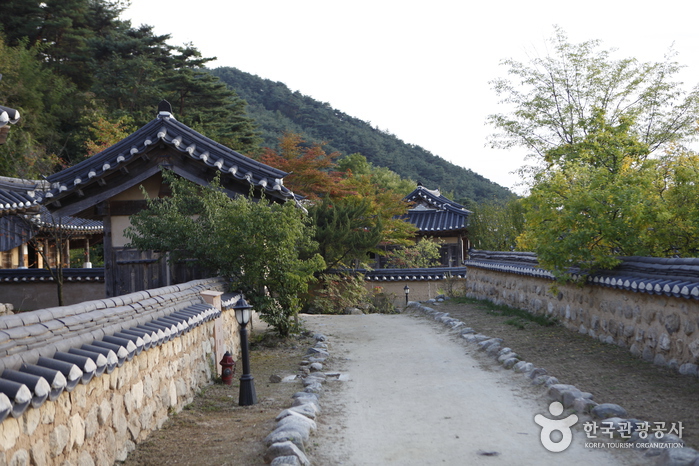

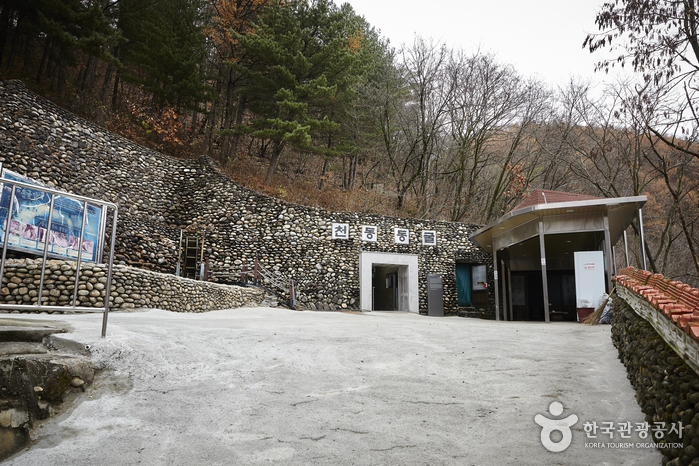
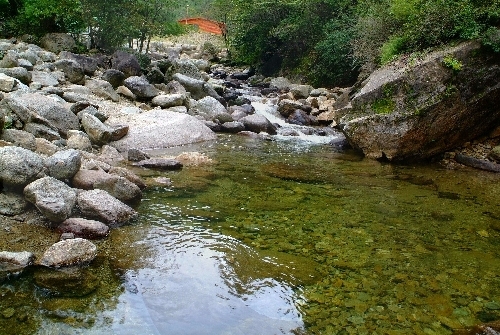
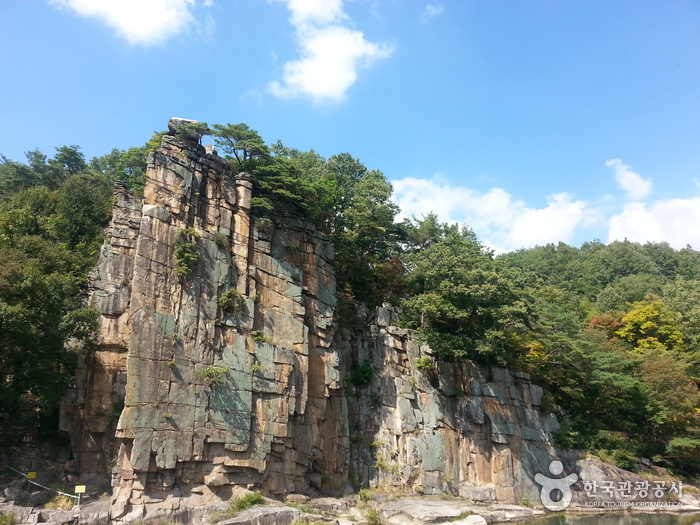
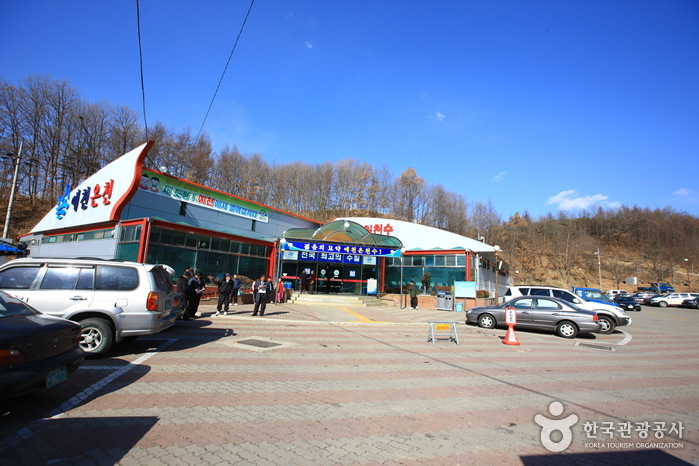
![Danchonsewongotak [Korea Quality] / 단촌서원고택 [한국관광 품질인증]](http://tong.visitkorea.or.kr/cms/resource/12/2594512_image2_1.jpg)
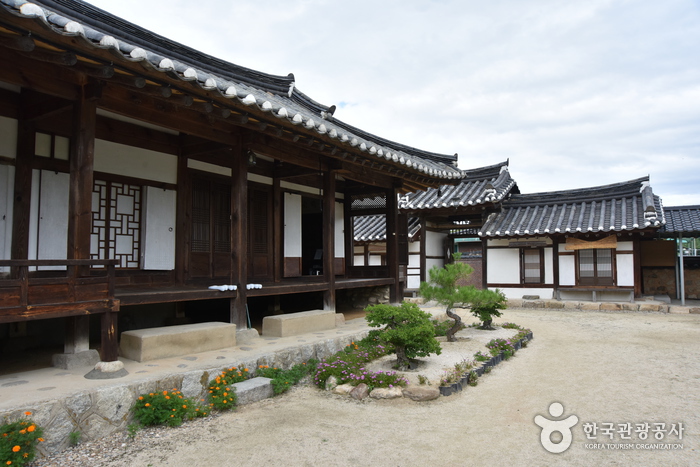
 Français
Français
 한국어
한국어 English
English 日本語
日本語 中文(简体)
中文(简体) Deutsch
Deutsch Español
Español Русский
Русский